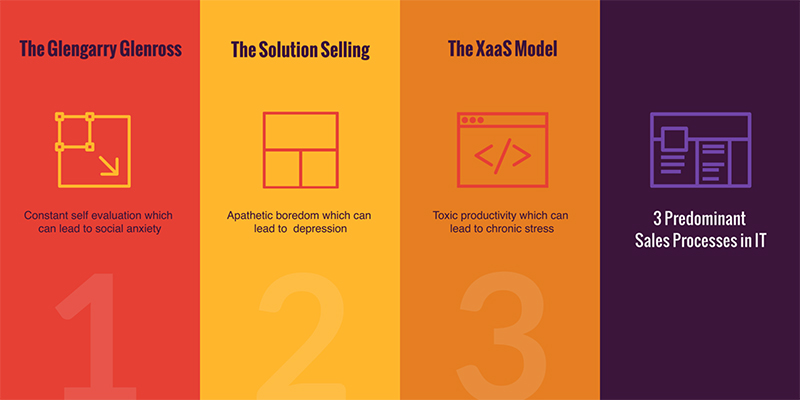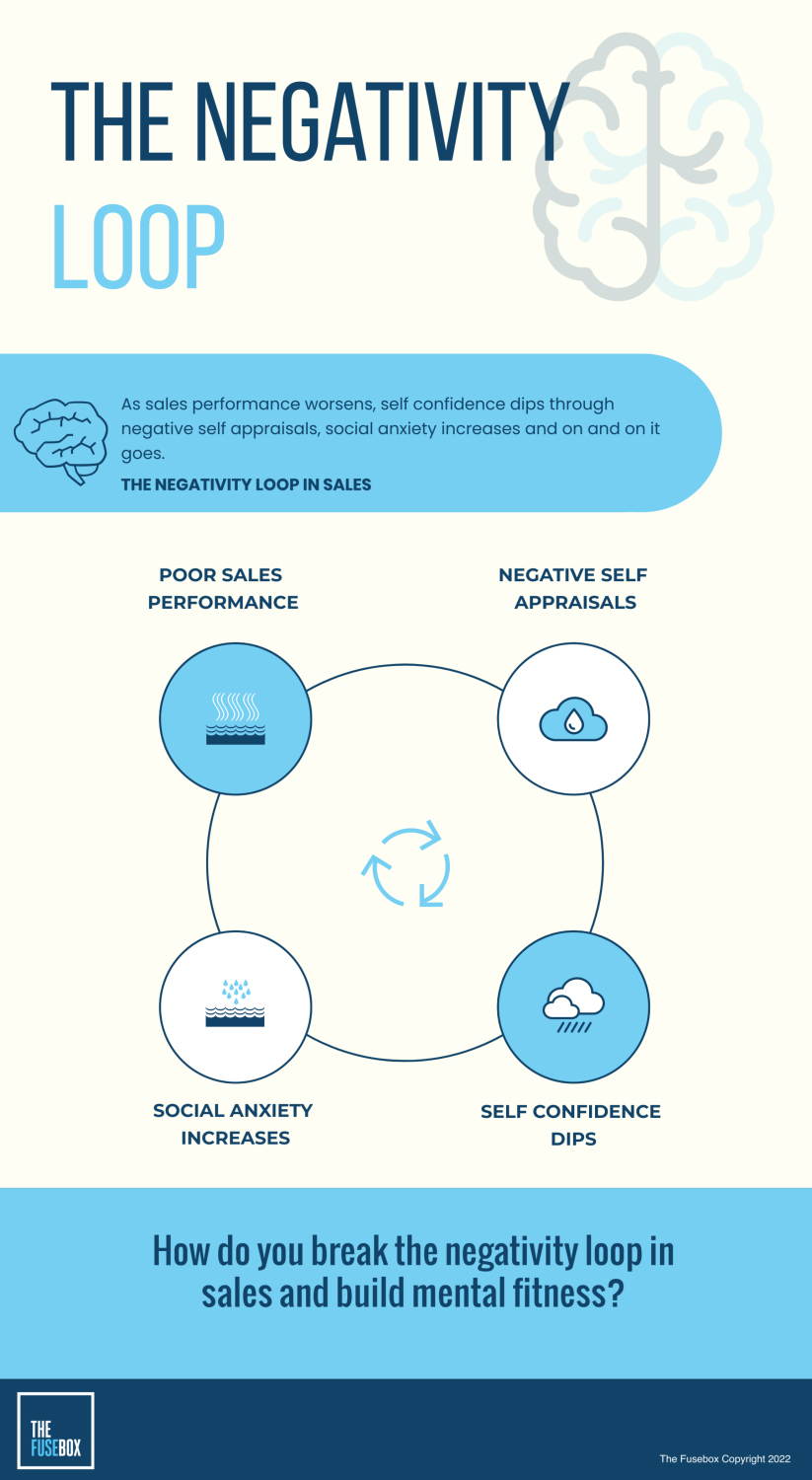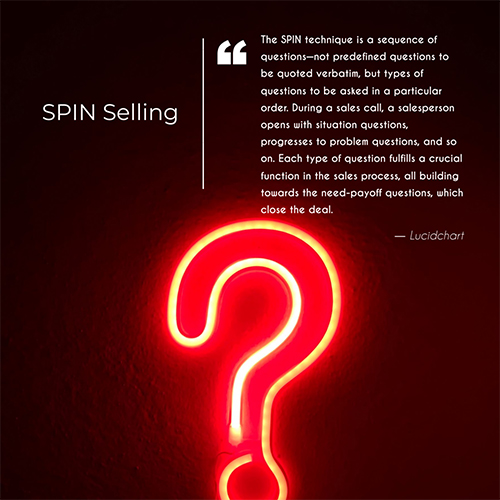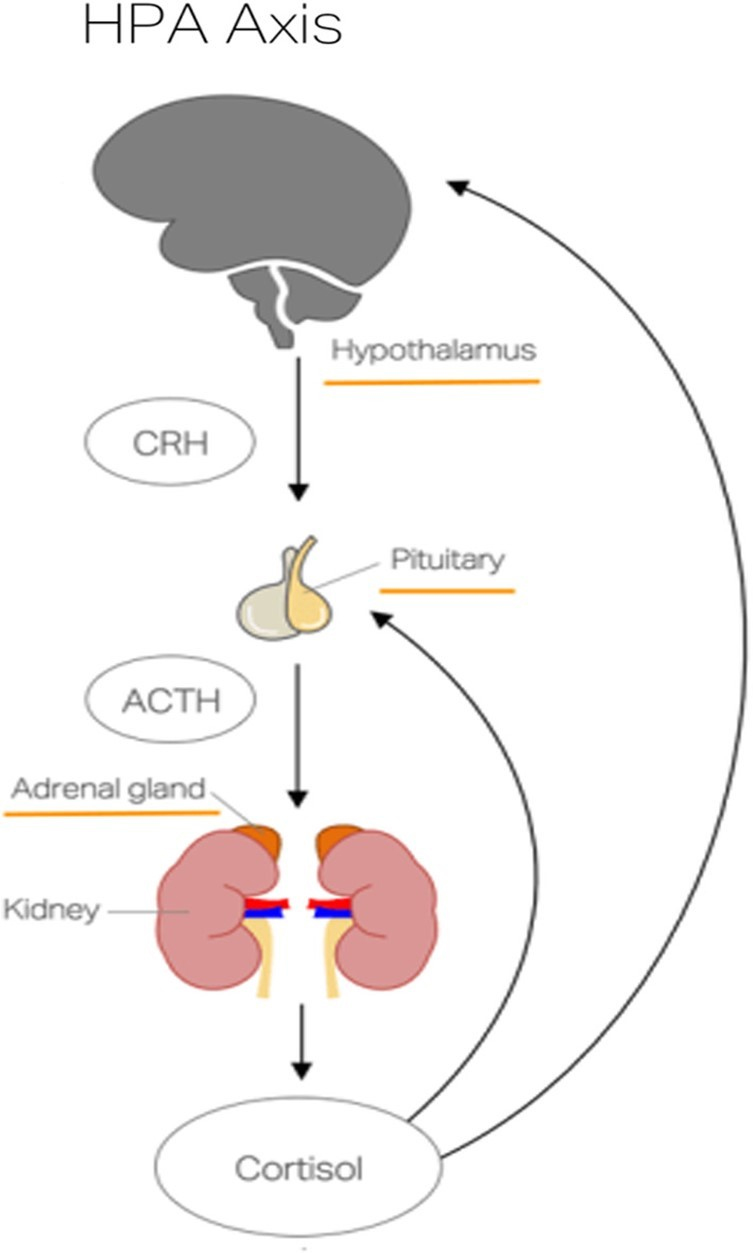It is mental health week. This year the focus is on loneliness. Sales can be a particularly lonely profession – whether you’re a star seller or someone struggling to meet their targets. The “game” has been built to favour lone players who thrive in a highly competitive environment. At least, in some businesses. Where loneliness is one of many outcomes created by broken sales systems.
In my last article, I promised I would deep dive into the three predominant sales systems that I have experienced whilst working in the IT industry and their impact on sustainable sales and mental fitness.
Here’s a quick recap on mental fitness and these three processes:

My hypothesis is that these sales systems create an environment that dehumanises the sales engagement, destroys curiosity, and hampers creativity. And that these three things all combine to create a cycle of commoditisation, lower margins, and a breeding ground for systemic poor mental fitness.
I will cover four critical elements present in any sales system: process, culture, language, and technology.
Let’s start with the Glengarry Glenross Approach.
Why have I called it this? The 1992 movie, based on the Pulitzer prize-winning play by David Mamet, perfectly captures what I find to be so contradictory to the healthiest way to sell. My 30+ years of sales practice indicates that the Glengarry Glenross approach creates an environment of constant self-evaluation which leads to social anxiety and a negative impact on sales performance. This in turn creates a negativity loop. As sales performance worsens, self-confidence dips through negative self-appraisals, social anxiety increases, and on and on it goes.

Before I describe this model and review its organisational ramifications, let me define what I mean by social anxiety from a psychological perspective as well as neurological implications.
What is social anxiety and what does it mean to the sales organisation?
Social anxiety is defined as ‘anxiety resulting from the prospect or presence of personal evaluation in real or imagined social situations.’[i] It creates discomfort, nervousness, unease, and angst in your interactions. Not a great mental state for a sales professional who needs to engender trust. And not easy to disguise. The physical manifestations of this mental state such as speaking too much, fidgeting, apologising unnecessarily, avoiding direct eye contact, and as identified through more recent research, the release of chemicals which communicate emotions, referred to as “scent of emotions,”[ii] means that there is little chance of your customer not feeling/sensing that something is not right.
Someone who experiences social anxiety has preconceived negative evaluations and reactions, real or imagined, from people who are deemed important and with who they are trying to create a good impression on.[iii] Social anxiety stems from two types of judgement: “(1) what is acceptable or desired in a given situation and (2) one’s personal ability to attain the expected standard.”[iv]

Unlike some might assume, higher social anxiety is “not associated with increased time spent alone,”[v] or “improved by regular exposure to others.”[vi] So it isn’t surprising that in the role of sales, where creating, developing, and maintaining social relationships is paramount, social anxiety is highly likely to have an impact on sales performance.
Social anxiety is a very well researched area. However, research on seller’s social anxiety is limited. Nevertheless, it’s worth considering what the evidence tells us so far.[vii]
Social anxiety negatively impacts sales performance.[viii]
● Social anxiety in a sales context is tied to customer evaluations (e.g. sales call anxiety) and employer evaluation (e.g. attachment anxiety).[ix]
● Sales call anxiety causes poor communication effectiveness[x] (e.g. speaking too much, apologising unnecessarily which causes the salesperson to lose credibility with the customer[xi]).
● Salesperson attachment anxiety (someone’s concern with abandonment, rejection, approval or support from their organisation) is linked to reduced “detection of non-verbal cues, perspective taking and self-reported performance.”[xii]
● Mindful acceptance and perceived sales manager support lowers social anxiety and alleviates the impact of poor sales performance.[xiii]
● “Social connectedness at work can diminish employee stress” and the sales manager plays a crucial role in increasing social connectedness.[xiv]
According to Steve Martin, from Harvard Business Review, five out of the top seven reasons why salespeople lose business is due to poor social skills such as: inability to communicate with executives, poor trust, inability to clearly communicate their solution, inability to establish a personal connection with the customer and being too self-centred).[xv] Is this a lack of skill or an outcome of the sales system in place?
The question becomes one of nature versus nurture. Does a Glengarry Glenross environment create social anxiety or is it simply not the right environment for someone who is already predisposed to it? I can only answer this from my experience. I haven’t seen many people who have social anxiety apply for sales jobs whereas I’ve seen plenty of sales professionals go on sick leave or leave the sales profession due to an onset of social anxiety driven by the sales environment.
What is the impact of the Glengarry Glenross sales system?
My observations are based on strategic and sales coaching work done in various sectors of the IT industry over the last 25 years: distribution, resellers, software development, SaaS providers, ISVs, ISPs, systems integrators, and, more recently, all types of cloud computing providers. I have found this sales model to be most prevalent in the reseller community and within the large, corporate software vendors.
Let’s look at the four key areas in the context of this particular sales system: Process, Culture, Language, and Technology.
The Glengarry Glenross-style Process
The traditional model, driven by the ABC mantra – Always Be Closing! It’s a fairly structured, push approach with the product/service at its core and no real sight of the Buyer driving the engagement. Everything is built from the inside out.
The process has been built with little to no insight into how the customer buys. The sales methodology deployed is usually first-generation Spin Selling.
In this approach, the sales force is disconnected from the customer. “You are only as good as your last quarter” is the predominant mindset. The process itself drives behaviour that forces the seller to be self-focused, constantly self-evaluating against colleagues, and correlating the buy/no-buy decision to self-worth which can lead to social anxiety and high levels of stress.

Stress has always been part of the sales profession’s DNA. It fuels us, drives our creativity, and powers our ability to meet sales targets. That is the good side of stress. However, with the advent of the Internet and the commoditisation of technology, the Glengarry Glenross model has become a breeding ground for bad stress. We see this in the increase in poor occupational health both physical and mental and its ramifications:
- Presenteeism in sales
- Absenteeism due to illness
- Sales churn
- Burn out of high sales performers leaving the profession
The Glengarry Glenross-style Culture
The culture, hand in hand with the language, is aggressive and ego-driven. The oldest part of our brain, the limbic system, is usually in charge in this environment.
As a sales coach I have found that sellers in these environments find uncertainty and ambiguity very stressful and are often in a constant state of worry which, in turn, makes them:
- Lose confidence in their ability to solve a problem
- See all problems as threats
- Become chronically frustrated when facing any problem
- Be constantly negative about what they might achieve with their solutions
- Take long term leave for stress-related illness
What I’ve observed in our client engagements where this culture exists is a sales force that is disconnected from the customer. It drives a mindset that forces the seller to be totally self-focused. At times, running very close to an ethical line that promotes negative self-perceptions and low self-esteem.
Not surprisingly, the churn rate in these sales environments tends to be very high.
The Glengarry Glenross-style Language
The language used, as shown in the infamous film, is inherently aggressive and confrontational, “Put the coffee down. Put the coffee down. Put the f$%^ing coffee down. The coffee is for winners!” This is shouted by a manager to a seller who used to be an exceptional performer but has been experiencing a rough patch.

It drives a competition mindset instead of collaboration. The metaphors/analogies used are often “war” based. It still surprises me that, to this day, The Tao of War is often quoted as a sales “bible”.
The language expresses this system’s inherent biases – extrovert-focused, male-focused, western-based. It has now been proven that language drives behaviour – the story we tell ourselves becomes our reality. It is obvious this cannot be disconnected from the impact this has on our mental states. Language, and the aggression that might be conveyed through it, can disrupt the fine balance in the HPA axis (hypothalamic-pituitary-adrenal axis). Taking us from good stress to bad stress and putting our bodies and our minds in a heightened state of alert, sometimes permanently.
The Glengarry Glenross-style Technology
In this sales system, technology is used, and perceived by sellers, as a control tool – Big Brother.
The technology in this environment is usually disconnected – separate systems dealing with different aspects of the customer journey. Data exists in silos which adds pressure on sales management. It forces the sales professional to focus on the operational side of sales instead of on the customer.
This is exacerbated by CRM systems that are implemented as an internal sales operations mechanism rather than a tool to drive better customer engagement.
Adopting digital channels has been slow and continues to be done sporadically by resellers and centralised by the larger corporate software vendors. Centralised digital media strategies and processes can create a further disconnect between seller and buyer if not designed from an individualised, human-centric perspective.
A sporadic, unstructured approach creates demands on time that shifts the pendulum to bad stress and low self-worth when communications don’t yield the required outcomes, in the time desired, by management.

How do we fix what is broken with this style of selling?
It is very likely that you might identify with just some elements of this system, remnants of a past way of doing things that have been difficult to strip out from an organisation’s culture.
There are sales interventions that can be put in place at a systemic level to minimise the impact of social anxiety. Here are three things a company can do to start with:
- Expand the timeline of the sales funnel – Allow sufficient time within the sales process for real connections to be formed – this will give the salesperson the opportunity to be genuine and identify their best seller/buyer match within an organisation. Negative self-appraisals will slow down as confidence builds up. An added bonus – it will make forecasting easier and more accurate.
- Stop automating the human connection – Every one-to-one communication touchpoint should be made by an actual human being. This allows the salesperson to showcase his/her personality and build self-confidence by creating value for the Buyer at every touchpoint. This requires both context and emotion. AI is not there yet with emotion. Emotion regulation can improve relationships, drive commitment and, more importantly, minimise impact on mental drain.
- Train to reframe – Train the sales team, and in particular sales management, on the concept of reframing – jolting the brain out of the fear/negativity loop and into creativity/opportunity mode, building on skills such as curiosity and calibration with the Buyer. This will allow them to see threats and conflicts as opportunities.
These three interventions will help with neurological manifestations such as the disruption of the HPA axis balance and all the mental and physical symptoms this creates.
As a seller, you might consider developing the following skills:
- Using planning to build value and gain control – planning has been traditionally perceived as a thing to do once in a while – an event. And although some organisations insist on sellers putting together Account Plans, these are often done as a tick box exercise. I have found that planning is possibly the single most valuable sales skill a seller can possess. Not only does it provide a framework from which you can “chunk it up” to drive sales outcomes but, through the collaborative creative process, it can release dopamine which can counterbalance the negative stress found in Glengarry Glenross environments. Add to that a complete repositioning of a seller, from a buyer, as a value creator and you can break the negativity loop. If you want to know more about this, contact me and I will send you a complimentary copy of the Value Creator ebook.
- Learning to connect in a hybrid world – we’re currently straddling three very different generations within the primary IT buyer communities – Generation X, Millennials and Generation Z. They all require different approaches to communication and have entirely different expectations in terms of format, tone of voice and mediums. Add to this the impact of the pandemic which has made virtual communications ubiquitous and here to stay as we move into a hybrid world. For some, these numerous and conflicting requirements on the preferred way to interact can heighten social anxiety. This can be addressed by adopting a coaching-style, mindfulness-based approach to your sales engagements, which will lower your heart rate, increase positive emotions, and build resilience.[xvi]
- Turning conflict into opportunity – embedding psychological interventions such as MBCT (mindfulness-based cognitive therapy) into the sales engagement process can help an individuals’ ability to manage stressors without perceiving them as a threat. It will decrease the likelihood of creating a negativity loop with the adverse physiological reactions these emotions provoke such as dysregulated cortisol responses. It will also reduce work stressors in the day to day customer interactions.

Conclusion
The views presented here are based on the evidence available on mental fitness and the interrelationship with sales performance as well as my experience out in the field. As someone who has been hired for her expertise in sales transformation, I know only too well how difficult it is to make systemic changes, both in terms of organisational structure, processes, and human behaviour.
Although current studies highlight the need for statistical power when it comes to the impact of particular sales systems on psychological, and neurological markers, and in turn on sales performance, initial findings suggest that any intervention must be assessed for its specific merits. Looking carefully at the likely impact on the entire sales system rather than as a programmatic approach that, although likely to offer some short-term shifts, is not conducive to systemic organisational changes and trait changes at an individual level.
In my next post, I’m going to deep dive into the Solutions Approach, exploring its evolution and more importantly what it has done for a sales professional’s mental fitness and sales sustainability. My aim is to critically analyse these sales systems so that we may effectively deal with those areas that exacerbate poor mental fitness so that we can build a H.E.A.L.T.H.Y. sales team.
In the meantime, what’s your take on the Glengarry Glenross style? What experiences have you had with this sales system?
Concerned about the impact that your existing sales system might be having on the mental fitness of your sales team and your ability to meet targets consistently? Contact me at info@thefusebox.com to explore a complimentary assessment and see how your organisation measures on the Sales Wellbeing Index.
This post first appeared on the Fusebox Blog at https://www.thefusebox.com/thinking-doing/
Sources
[i] Social anxiety and self-presentation: A conceptualization model. B.R. Schlenker & M.R. Leary, Psychological Bulletin, 1982, 641-669.
[ii] The scent of emotions: A systematic review of human intra- and interspecific chemical communication of emotions. Calvi et al, Brain and Behaviour, 2020.
[iii] Social Anxiousness: The Construct and its Measurements. M.R. Leary, Journal of Personality Assessment, 1983, 66-75.
[iv] Consumers who avoid relationships: Social Anxiety in Commercial Contexts. E. Delacroix and V. Guillard, Journal of Consumer Behaviour, 2016, 370-384.
[v] When the need to belong goes wrong: The Expression of Social Anhedonia in Daily Life. Brown et al, Psychological Science, 2007, 778-782.
[vi] Information processing bias in social phobia. C.R. Hirsch and D.M. Clarke, Clinical Psychology Review, 2004, 799-825.
[vii] Social anxiety and salesperson performance: The roles of mindful acceptance and perceived sales manager support. Bruno Lussier et al, Journal of Business Research, 2020.
[viii] Consumers who avoid relationships: Social Anxiety in Commercial Contexts. E. Delacroix and V. Guillard, Journal of Consumer Behaviour, 2016, 370-384.
[ix] Sales Call Anxiety: Exploring what it means when fear rules a sales encounter. W. Verbeke & R.P. Bagozzi, Journal of Marketing, 2000, 88-101.
[x] Sales Call Anxiety: Exploring what it means when fear rules a sales encounter. W. Verbeke & R.P. Bagozzi, Journal of Marketing, 2000, 88-101.
[xi] Coping with Sales Call Anxiety: The role of sales perseverance and task concentration strategies. Belschak et al, Journal of the Academy of Marketing Science, 2006, 403-418.
[xii] Examining the Impact of Salesperson Interpersonal Mentalizing Skills on Performance: The Role of Attachment Anxiety and Subjective Happiness. Agnihotri et al, Journal of Personal Selling and Sales Management, 2016, 174-189.
[xiii] Do workplace-based mindfulness meditation programs improve physiological indices of stress? A systematic review and meta analysis. Heckenberg et at, Journal of Psychosomatic Research, 2018.
[xiv] The relationship of organisational politics and support to work behaviours, attitudes, and stress. Cropanzano et al, Journal of Organisational Behaviour, 1997, 159-180.
[xv] 7 reasons salespeople don’t close the deal. S.W. Martin, Harvard Business Review, 2017.
[xvi] Garland, E., Gaylord, S., & Fredrickson, B. (2011). Positive Reappraisal Mediates the Stress-Reductive Effects of Mindfulness: An Upward Spiral Process. Mindfulness, 2(1), 59-67. https://doi.org/10.1007/s12671-011-0043-8


